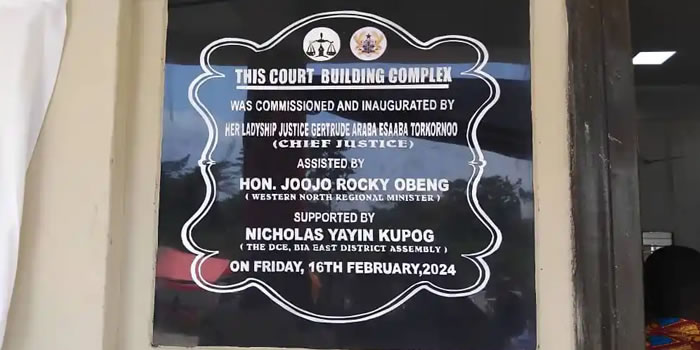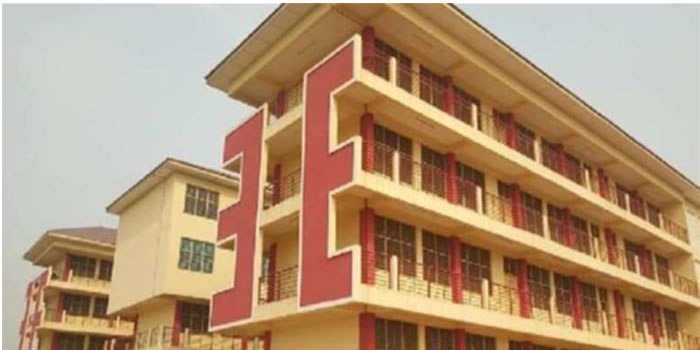

Introduction
With increases in the country’s population, housing has become one of the challenges confronting the nation as a whole; the type of housing plays a major role in determining the standard of living in a household. In the year 2010, the policy framework of the Government of Ghana, the Ghana Shared Growth and Development Agenda (GSGDA), emphasized the need for increased access of the population to safe, adequate and affordable housing and shelter (National Development Planning Commission, 2010).
This chapter discusses information on the type of dwelling units, occupancy status, methods of waste disposal, main materials used in the construction of dwelling units, access to utilities and household facilities in Bia East District.
Housing Stock
Table 8.1 shows that the total number of houses in the district is 5,409, which is about 1.4 percent of total houses in Western Region. The Table depicts that all these houses are found in rural areas; there is no urban area in the district. The total number of households for the district is 5,969.
The average number of households per house in the district is 1.1 percent, which is lower than the regional average of 1.5. The average population per house is 5.1 compared to the region’s average of 6.3. However, with regards to average household size, Table 8.1 indicates a household size of 4.6 for the district, which is slightly higher compared to the regional figure of 4.3.
Access to Utilities and Household facilities
This section analyses household amenities such as cooking space, sanitation issues and source of lighting in dwelling units.
Main source of light
From Figure 8.1, it can be realized that flashlight/torch (64.6%) is the major source of lighting in households in the district. The second most common source of energy is electricity (mains) which is used by 22.0 percent of the households while 12.0 percent depend on kerosene lamp. The least source of energy used by households in the district is firewood (0.1%), other source of light (0.1%) and crop residue (0.1%).
Cooking space
Table 8.8 shows that 2.8 percent of households in the Bia East District have no cooking space. Majority (52.4%) of the households use separate rooms for their exclusive use as cooking space followed by households who resort to the use of open space in their compound (14.4%). The Table further shows that 9.9 percent of households use verandasas their cooking space. A good number of households (9.3%) also use a structure with roof but without walls as their cooking space.
Cooking fuel
Over eighty-four percent of households in the district rely on wood as their main source of fuel for cooking as against the regional average of 48.4 percent. Another 9.1 percent households depend on charcoal as their main source of fuel for cooking. The issue of Animal waste, sawdust, crop residue, kerosene and electricity as source of cooking fuel in the district is significantly low totaling less than 1.0 percent.
INFORMATION COMMUNICATION TECHNOLOGY
Introduction
Information Communication Technologies (ICT) have become important tools in today’s knowledge-based information society and economy. As a result, the impact of ICT on socio-economic activities cannot be underrated. ICT has been defined to include the full range of electronic technologies and techniques used to manage information and knowledge. It is important to note that the use of ICT has been integrated into virtually every facet of commerce, education, governance and civic activity in developed countries and has become a critical factor in creating wealth worldwide. The development of ICT has been argued to provide opportunities for developing countries such as Ghana. This chapter analyses ownership of mobile phones and use of Internet facilities by persons 12 years and older in Bia East District.
Ownership of Mobile Phones
In Table 5.1, mobile phone ownership by sex for the population aged 12 years and older is presented. Out of 17,718 people, 37.9 percent have mobile phones. A higher proportion of males (46.7%) than females (28.1%) use mobile phones.
Use of Internet
Table 5.1 further shows the use of Internet by the population 12 years and older. It indicates that 1.2 percent of the population in Bia East District use Internet facility. A higher proportion of males (1.6%) are using Internet facility as compared to their female (0.7%) counterparts. Overall, the use of Internet facility is very low in the district. This could be due to the lack of access to the telecommunication networks.
Household ownership of Desktop or Laptop Computer
Table 5.2 further shows that 1.4 percent of the total households in the district have a desktop or laptop computer. There are no variations in the proportion of households with desktop or laptop by sex. The table depicts that 1.4 percent of males and females have desktops or laptops and, consequently have access to such ICT facility.
Date Created : 11/18/2017 1:31:16 PM










 facebook
facebook
 twitter
twitter
 Youtube
Youtube
 +233 593 831 280
+233 593 831 280 0800 430 430
0800 430 430 GPS: GE-231-4383
GPS: GE-231-4383 info@ghanadistricts.com
info@ghanadistricts.com Box GP1044, Accra, Ghana
Box GP1044, Accra, Ghana